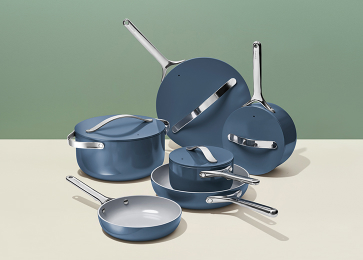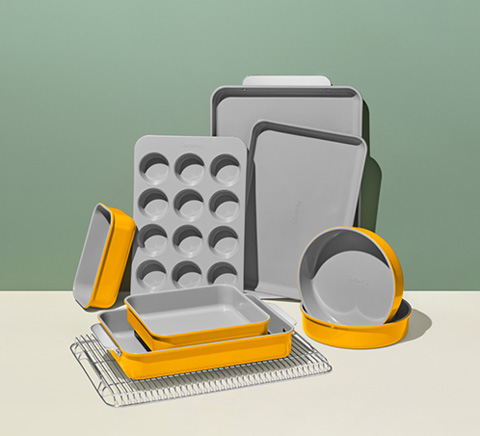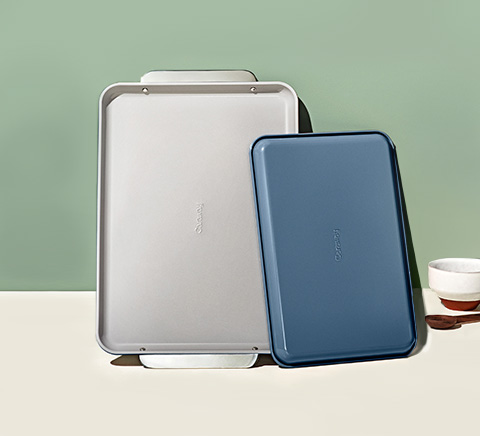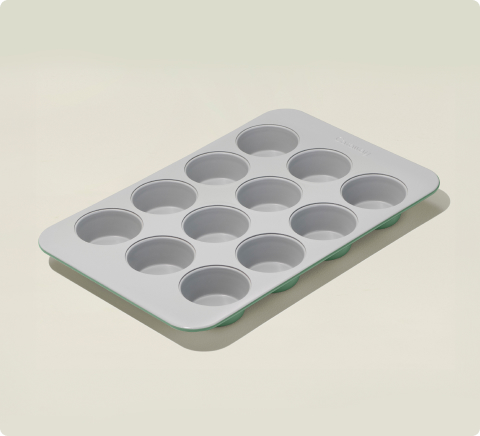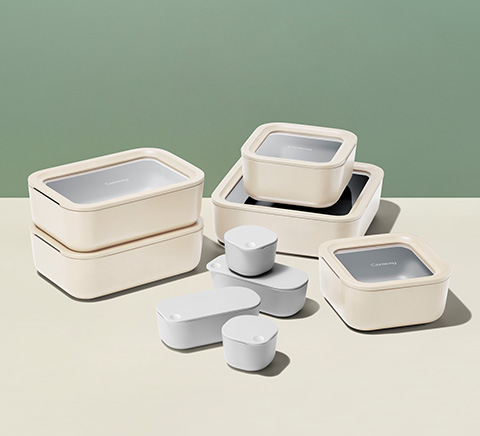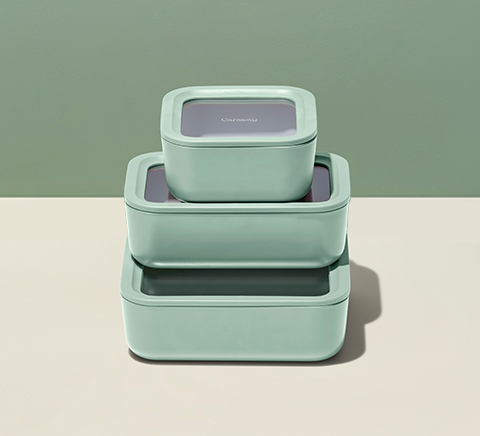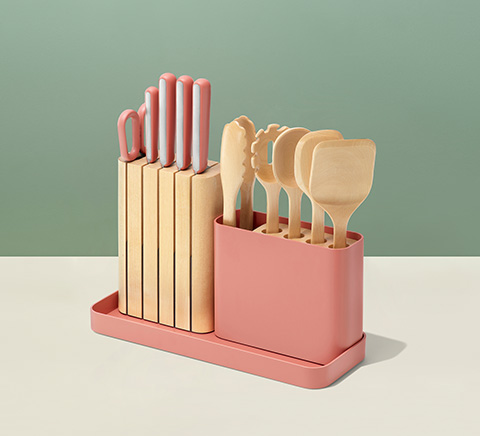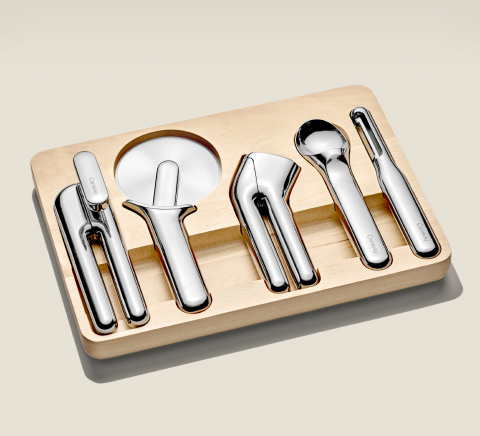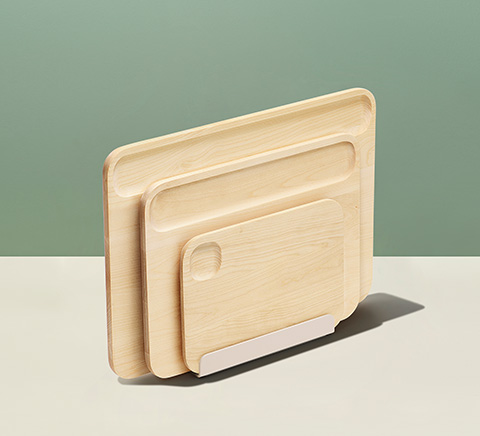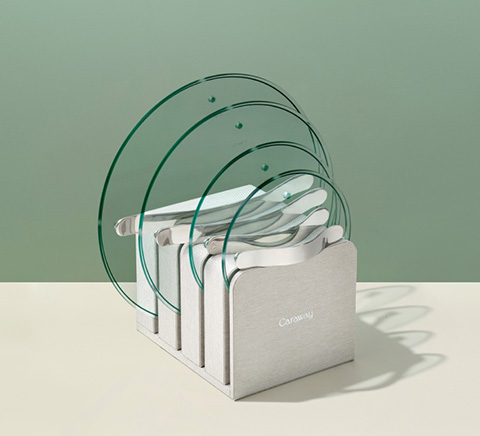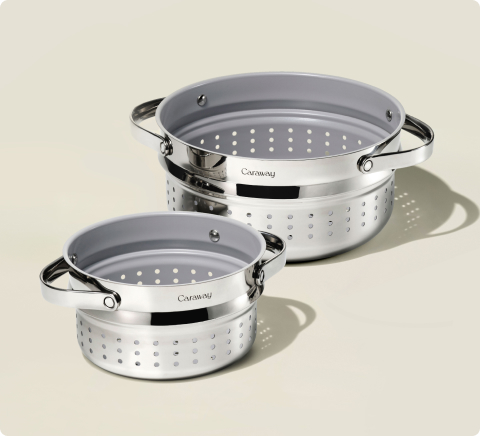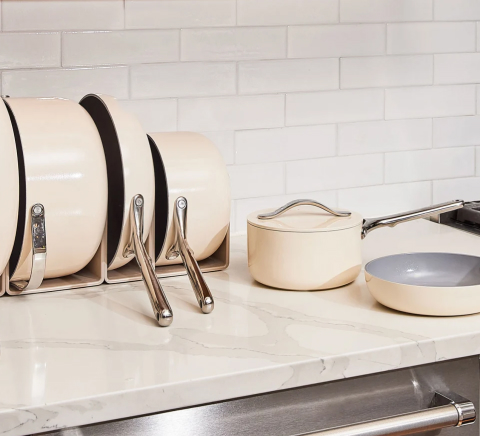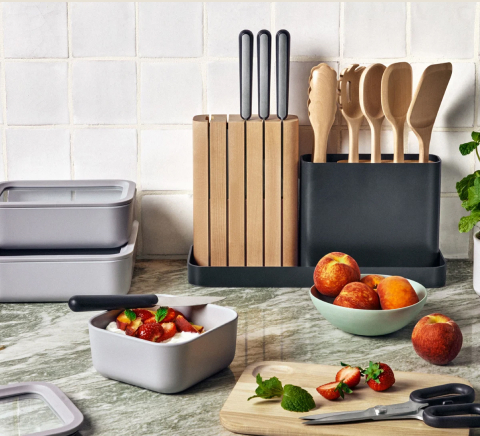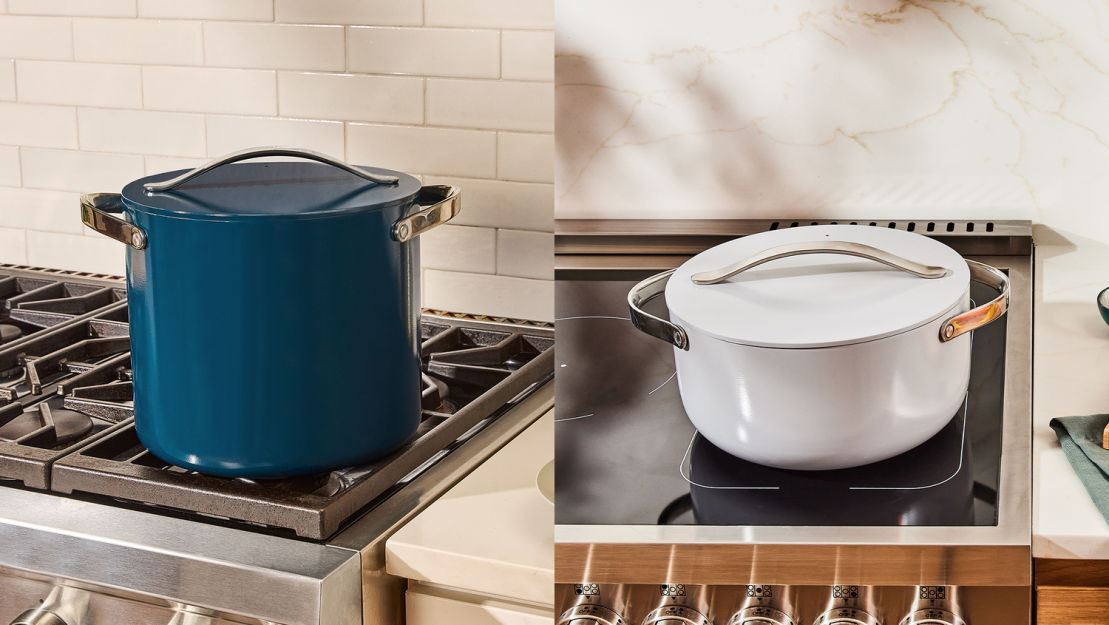Stock Pot vs. Dutch Oven: 5 Key Differences
Choosing the right cookware is essential, not only for the quality of your meals but also for the ease of the cooking process. It's not about having the fanciest tools in the drawer but about finding pieces that fit your cooking style and elevate your dishes.
Today, we're diving into the world of two kitchen mainstays: the stock pot and the Dutch oven. Each brings its own set of strengths, designed for specific tasks yet often mistaken for one another.
Let's explore the similarities and differences to help you decide which deserves a spot in your kitchen.
What Is a Stock Pot?
At its core, a stock pot is a versatile tool that excels at simmering. Its tall, narrow shape is crafted for making broths, boiling pasta, and creating soups. The design is strategic---the height minimizes liquid evaporation, making it ideal for long, slow cooking processes.
Enter our new Cookware+ Stock Pan: with an aluminum core, and ceramic coating, this pot ensures your meals are cooked evenly and safely without sticking. Its 12 qt capacity welcomes everything from a seafood boil to large batches of sauce, proving that size does matter when crafting the perfect meal.
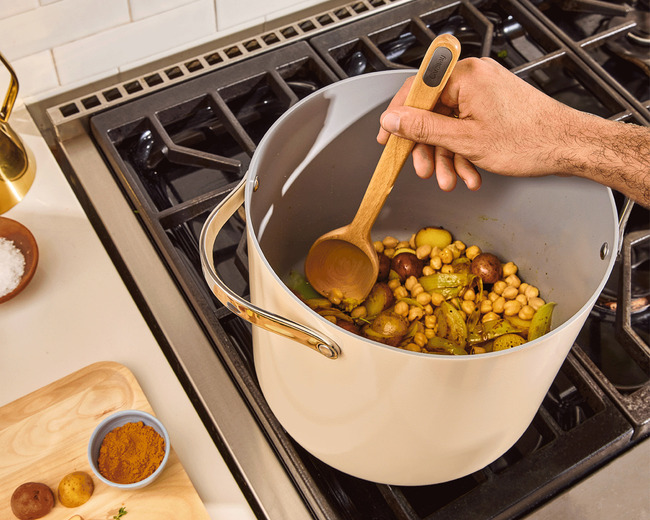
What Is a Dutch Oven?
On the other hand, the Dutch oven is like the Swiss Army knife of cookware. It's robust, versatile, and ready to tackle anything from stews and roasts to freshly baked bread.
Made from either seasoned cast iron or enameled cast iron, the Dutch oven conducts and retains heat like a dream, allowing it to cook evenly, whether it's on the stovetop or in the oven. At Caraway, we offer both a stainless steel Dutch Oven and ceramic-coated Dutch Oven, blending heat retention with a non-toxic, non-stick surface for an all-in-one pot that brings joy to cooking and simplicity to cleaning.
Whether you're slow-cooking a stew or baking a crusty loaf of bread, our Dutch ovens are designed to deliver consistent results and double as a stylish serving dish straight from oven to table.
Stock Pot vs. Dutch: How Do They Differ?
It becomes clear that while the stock pot and Dutch oven may share some cooking duties, they have distinct characteristics that set them apart. Understanding these differences will refine your kitchen skills and ensure that your cookware choices are perfectly aligned with your needs.
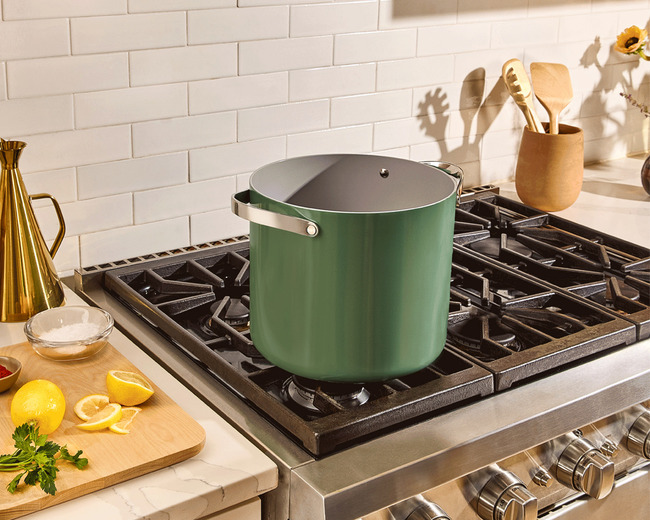
1. Heat Retention and Distribution
Thanks to its heavy-duty construction, the Dutch oven is unrivaled in retaining heat, typically using cast iron or enameled cast iron. This makes it ideal for recipes that benefit from a slow, even cook, like tenderizing tough cuts of meat or baking bread with a perfectly crusty exterior.
Our Dutch ovens, with their 5-ply stainless steel or ceramic-coated options, exemplify this by providing consistent, even heat that turns every dish into a masterpiece.
On the flip side, the stock pot, with its aluminum core and ceramic coating found in our Cookware+ Collection, heats up quickly and is designed for tasks that require a rapid boil, such as making pasta or blanching vegetables. Its design focuses on efficient heat distribution to the liquid it holds, making it the go-to option for creating broths and soups.
2. Versatility in Cooking Methods
Beyond just simmering, Dutch ovens are perfect for baking, braising, frying, and more. The ability of our Dutch ovens to transition seamlessly from stovetop to oven makes them indispensable for dishes that require both cooking methods. Its heavy lid seals in moisture, allowing flavors to develop fully and ingredients to become fall-apart tender.
While not typically used for baking, stock pots excel in their designated sphere of boiling and simmering. Their shape and size are optimized for preparing stocks, soups, and boiling large quantities of water for pasta or vegetables, focusing on the efficiency of these specific tasks.
3. Storage and Handling
When it comes to kitchen storage, the stock pot's taller and narrower design can be more challenging to accommodate in cabinets compared to the Dutch oven. However, our stock pot is designed with ergonomic handles and optimal weight distribution, which eases both handling and storage---even when full.
The Dutch oven, heavier and often more substantial, requires careful handling, especially when full. Yet, its aesthetic appeal means it can effortlessly transition from kitchen to table, serving as both cookware and serving dish, thus offsetting any storage inconvenience with its dual functionality.

4. Maintenance and Care
Ease of cleaning and maintenance is another important consideration. The ceramic interior of our stock pot simplifies cleaning, ensuring a hassle-free experience after even the largest cooking tasks. Its construction is designed for quick and effective cleaning.
With their durable cast iron or enameled surfaces, Dutch ovens require more specific care, especially if they are not coated with a non-stick layer. Our non-toxic, non-stick Dutch Ovens merge the traditional benefits of cast iron cooking with the convenience of easy cleanup, representing the best of both worlds.
5. Ideal Uses Based on Design
Ultimately, the choice between a stock pot and a Dutch oven boils down to the dishes you love to prepare. The stock pot is indispensable for liquid-based cooking---think stocks, boiling, and soups---where its design maximizes efficiency and convenience.
Meanwhile, the Dutch oven's tough build and superior heat retention make it perfect for slow-cooked, flavor-rich dishes that benefit from even, consistent heat.
Practical Tips To Maximize Your Cookware's Potential
Having dived deep into the distinctions between stock pots and Dutch ovens, let's pivot to some actionable advice. These tips are aimed at helping you unlock the full potential of these kitchen staples, ensuring every cooking endeavor is not just a process but a pleasure.
Select the Right Material for the Task
The material of your cookware can significantly influence the outcome of your dishes. While Our Cookware+ Stock Pot, with its aluminum core and ceramic interior, is perfect for quick, even heating for broths and pasta, our stainless steel Dutch ovens offer unparalleled heat retention for slow-cooked meals.
Leverage Heat Settings to Your Advantage
Understanding and utilizing the correct heat settings can transform your cooking. Use the rapid heating ability of the stock pot to boil water or create stock efficiently.
Conversely, employ the Dutch oven's capacity for low and slow heat to tenderize meats or evenly bake bread. This strategic use of heat optimizes energy consumption and enhances the results.
Master the Art of Layering Flavors
Both stock pots and Dutch ovens excel at building and layering flavors. Start with a base of aromatic vegetables, adding them to your stock pot or Dutch oven as the foundation of your dish. This technique is especially effective in slow-cooked dishes, where flavors have time to meld and develop complexity.
Use as Intended for Optimal Results
Align your cookware choice with the cooking method it's designed for. While it's tempting to use a stock pot for a slow-cooked stew, remember the Dutch oven's design is specifically for such tasks, ensuring even heat distribution and moisture retention for perfectly cooked dishes every time.
Don't Shy Away From Versatility
While it's important to use cookware as intended, don't be afraid to explore the versatility of your Dutch oven or stock pot. Beyond their primary uses, discover how a stock pot can be perfect for canning or making large batches of jam. Similarly, explore how your Dutch oven can serve as an excellent vessel for deep-frying or even making casseroles.
Prioritize Care and Maintenance
The longevity of your cookware significantly depends on how well you maintain it. For our ceramic cookware, use gentle cleaning methods to preserve the non-toxic surface. Avoid metal utensils that can scratch the coating, and store your cookware properly to avoid chips and damage.
Embrace Clean Cooking
At Caraway, we believe in non-toxic cooking surfaces for healthier meals. Whether you're using our stock pot or Dutch oven, rest assured that you're preparing your food in the safest way possible. This commitment to clean cooking benefits your health and supports our philosophy of thoughtful design in every product.
The Bottom Line
Understanding the distinct roles of a stock pot and a Dutch oven in your kitchen is not just educational but transformative, guiding you toward making informed choices that align with your cooking needs.
At Caraway, we take pride in crafting cookware that meets your cooking needs and embraces our core values of non-toxic, safe cooking environments and thoughtful, elegant design. Whether you're simmering a broth in our Cookware+ Stock Pan or slow-cooking a hearty stew in our Dutch oven, we're here to ensure each meal you prepare is a step toward cleaner, healthier cooking.
Sources:
Stockpot Definition & Meaning | Britannica Dictionary
What Is a Dutch Oven? | Cooking School | Food Network
